Zhiyong Xiao
Swin-TUNA : A Novel PEFT Approach for Accurate Food Image Segmentation
Jul 24, 2025Abstract:In the field of food image processing, efficient semantic segmentation techniques are crucial for industrial applications. However, existing large-scale Transformer-based models (such as FoodSAM) face challenges in meeting practical deploymentrequirements due to their massive parameter counts and high computational resource demands. This paper introduces TUNable Adapter module (Swin-TUNA), a Parameter Efficient Fine-Tuning (PEFT) method that integrates multiscale trainable adapters into the Swin Transformer architecture, achieving high-performance food image segmentation by updating only 4% of the parameters. The core innovation of Swin-TUNA lies in its hierarchical feature adaptation mechanism: it designs separable convolutions in depth and dimensional mappings of varying scales to address the differences in features between shallow and deep networks, combined with a dynamic balancing strategy for tasks-agnostic and task-specific features. Experiments demonstrate that this method achieves mIoU of 50.56% and 74.94% on the FoodSeg103 and UECFoodPix Complete datasets, respectively, surpassing the fully parameterized FoodSAM model while reducing the parameter count by 98.7% (to only 8.13M). Furthermore, Swin-TUNA exhibits faster convergence and stronger generalization capabilities in low-data scenarios, providing an efficient solution for assembling lightweight food image.
MAC Revivo: Artificial Intelligence Paves the Way
Oct 21, 2024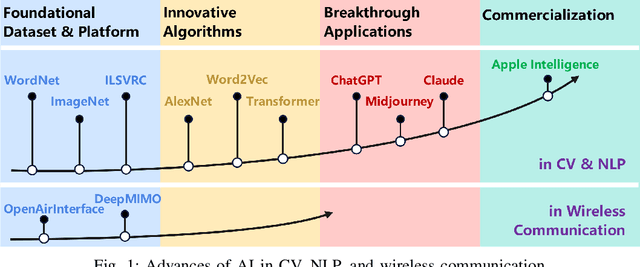
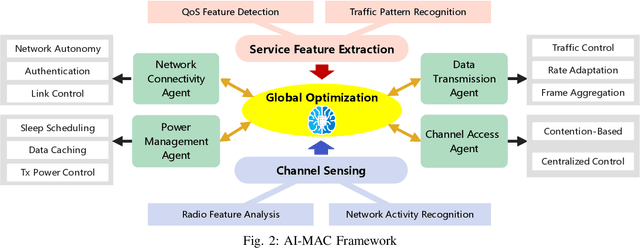
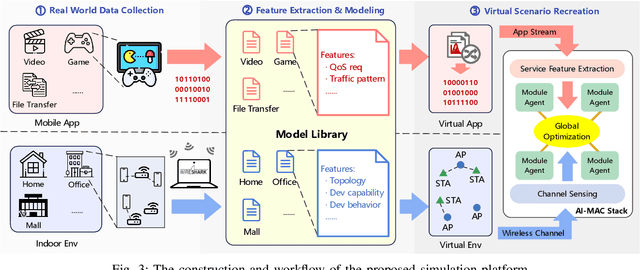
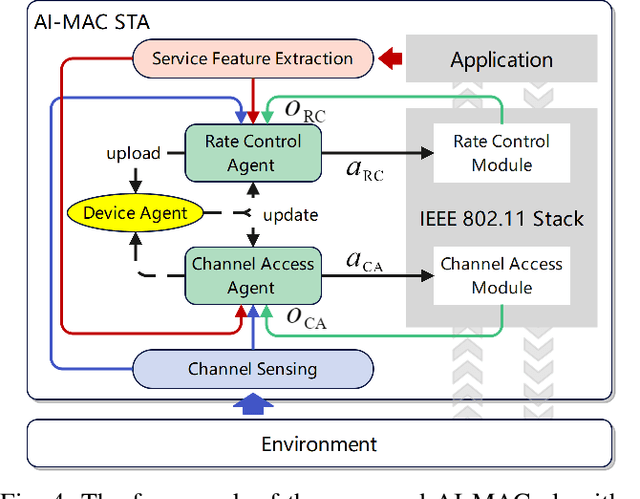
Abstract:The vast adoption of Wi-Fi and/or Bluetooth capabilities in Internet of Things (IoT) devices, along with the rapid growth of deployed smart devices, has caused significant interference and congestion in the industrial, scientific, and medical (ISM) bands. Traditional Wi-Fi Medium Access Control (MAC) design faces significant challenges in managing increasingly complex wireless environments while ensuring network Quality of Service (QoS) performance. This paper explores the potential integration of advanced Artificial Intelligence (AI) methods into the design of Wi-Fi MAC protocols. We propose AI-MAC, an innovative approach that employs machine learning algorithms to dynamically adapt to changing network conditions, optimize channel access, mitigate interference, and ensure deterministic latency. By intelligently predicting and managing interference, AI-MAC aims to provide a robust solution for next generation of Wi-Fi networks, enabling seamless connectivity and enhanced QoS. Our experimental results demonstrate that AI-MAC significantly reduces both interference and latency, paving the way for more reliable and efficient wireless communications in the increasingly crowded ISM band.
Multi-Label Takagi-Sugeno-Kang Fuzzy System
Sep 20, 2023
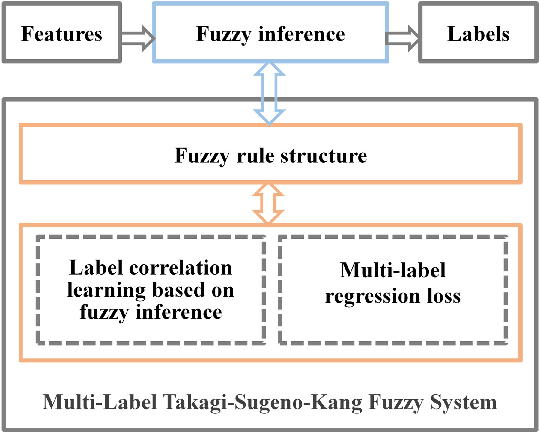
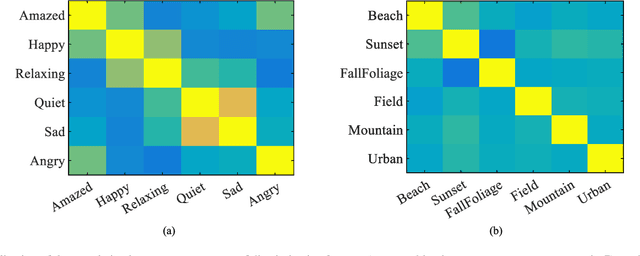
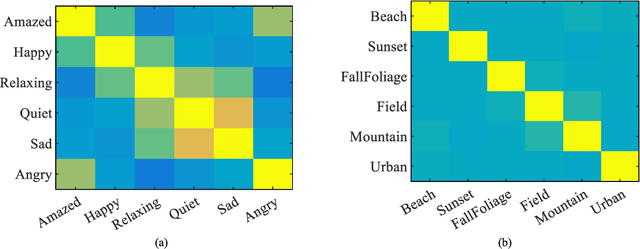
Abstract:Multi-label classification can effectively identify the relevant labels of an instance from a given set of labels. However,the modeling of the relationship between the features and the labels is critical to the classification performance. To this end, we propose a new multi-label classification method, called Multi-Label Takagi-Sugeno-Kang Fuzzy System (ML-TSK FS), to improve the classification performance. The structure of ML-TSK FS is designed using fuzzy rules to model the relationship between features and labels. The fuzzy system is trained by integrating fuzzy inference based multi-label correlation learning with multi-label regression loss. The proposed ML-TSK FS is evaluated experimentally on 12 benchmark multi-label datasets. 1 The results show that the performance of ML-TSK FS is competitive with existing methods in terms of various evaluation metrics, indicating that it is able to model the feature-label relationship effectively using fuzzy inference rules and enhances the classification performance.
Automatic Head Overcoat Thickness Measure with NASNet-Large-Decoder Net
Jun 22, 2021
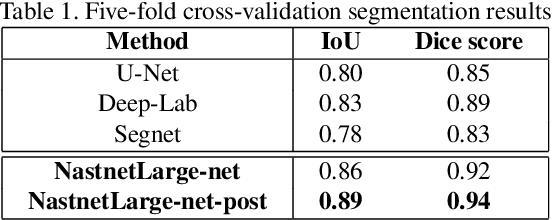

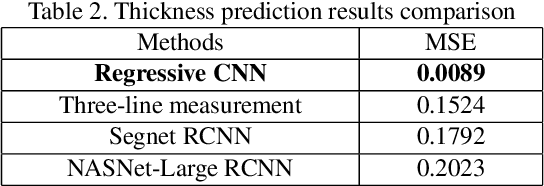
Abstract:Transmission electron microscopy (TEM) is one of the primary tools to show microstructural characterization of materials as well as film thickness. However, manual determination of film thickness from TEM images is time-consuming as well as subjective, especially when the films in question are very thin and the need for measurement precision is very high. Such is the case for head overcoat (HOC) thickness measurements in the magnetic hard disk drive industry. It is therefore necessary to develop software to automatically measure HOC thickness. In this paper, for the first time, we propose a HOC layer segmentation method using NASNet-Large as an encoder and then followed by a decoder architecture, which is one of the most commonly used architectures in deep learning for image segmentation. To further improve segmentation results, we are the first to propose a post-processing layer to remove irrelevant portions in the segmentation result. To measure the thickness of the segmented HOC layer, we propose a regressive convolutional neural network (RCNN) model as well as orthogonal thickness calculation methods. Experimental results demonstrate a higher dice score for our model which has lower mean squared error and outperforms current state-of-the-art manual measurement.
Mask Editor : an Image Annotation Tool for Image Segmentation Tasks
Sep 17, 2018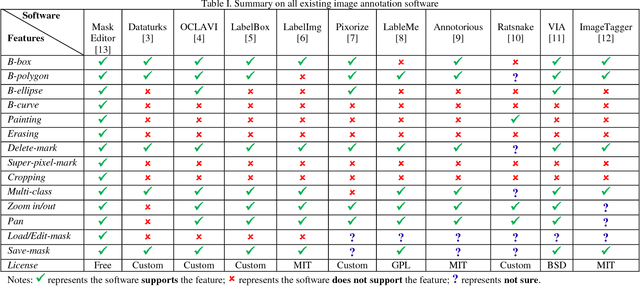
Abstract:Deep convolutional neural network (DCNN) is the state-of-the-art method for image segmentation, which is one of key challenging computer vision tasks. However, DCNN requires a lot of training images with corresponding image masks to get a good segmentation result. Image annotation software which is easy to use and allows fast image mask generation is in great demand. To the best of our knowledge, all existing image annotation software support only drawing bounding polygons, bounding boxes, or bounding ellipses to mark target objects. These existing software are inefficient when targeting objects that have irregular shapes (e.g., defects in fabric images or tire images). In this paper we design an easy-to-use image annotation software called Mask Editor for image mask generation. Mask Editor allows drawing any bounding curve to mark objects and improves efficiency to mark objects with irregular shapes. Mask Editor also supports drawing bounding polygons, drawing bounding boxes, drawing bounding ellipses, painting, erasing, super-pixel-marking, image cropping, multi-class masks, mask loading, and mask modifying.
 Add to Chrome
Add to Chrome Add to Firefox
Add to Firefox Add to Edge
Add to Edge